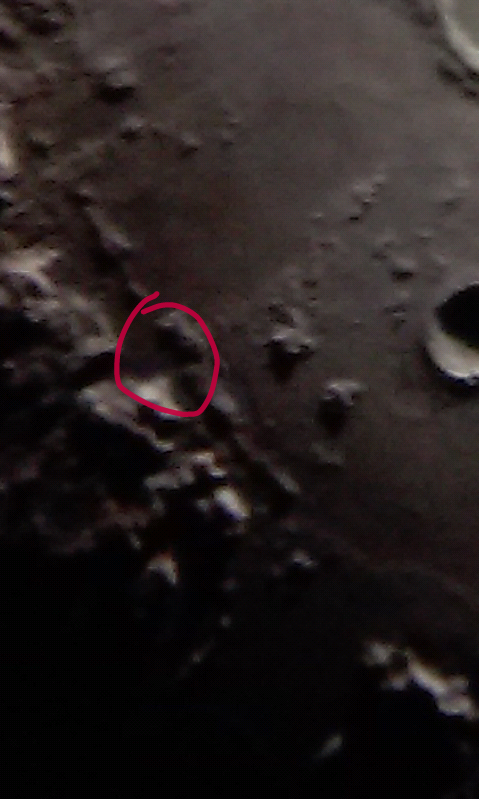Viewing deep sky objects through a telescope can be an unforgettable experience. Finding star clusters and galaxies can be a challenging and rewarding experience indeed! However, there is plenty of amazement to be had viewing our nearest celestial neighbor, the moon, and the features that it has.

The moon is approximately 230,000 miles from Earth, close enough to view some interesting features with any kind of telescope or binoculars. There are a few tips that will help you get the most out of your moon viewing experience.

First, though the full moon can be a gorgeous sight all its own, if you are trying to spot mountains and craters, try viewing the moon when it isn’t full. Shadows will help features stand out, especially along the terminator (the day/night border). Second, a lunar map will help you immensely. Knowing where to look and being able to know what you’re looking at will definitely add to the experience. Now that we’ve covered the basics, let’s take a look at some of the more interesting features of the moon.

First, we have the South Pole-Aitken Basin at the bottom edge of the moon. The overwhelming majority of this basin lies on the far side of the moon, and thus out of sight for us here. All we can glimpse on the near side is a huge “gash” in the bottom of the moon. The Aitken Basin is one of the largest impact craters in the solar system, and is the oldest known on the moon. It’s pretty neat when you realize that you’re viewing a feature that streches all the way around from the far side of the moon!

Next, we have the huge crater Tycho near the southern edge of the moon. When the moon is full, you can see the rays coming from Tycho, which is from material ejected from the impact that formed the crater. Named after the renaissance astronomer Tycho Brahe, this crater has a unique feature at the center, a protrusion. This is reminiscent of a slow motion view of dropping a stone into the water, where lava or superheated material splashed from the impact and hardened. Using a telescope, see if you can spot this feature in the middle of Tycho.

In the north, right in between Mare Imbrium and Mare Serenitatis (or the “eyes” of the face of the man in the moon) is the Lunar Apennines, a mountain range. This mountain range is where the tallest mountain on the moon can be found. To the west of the Lunar Apennines are a trio of craters. The largest one, with a ring-shaped appearance, is named Archimedes. Viewing the Lunar Apennines when the moon is slightly more than half full is the best time, since the shadows will help the mountains stand out better.

The western half of the moon contains another prominent trio of craters named Copernicus, Kepler, and Aristarchus. Copernicus, the largest of the three is located just west of the southern edge of the Lunar Apennines. Kepler is west of Copernicus, and Aristarchus is north of Kepler. All three craters appear to be surrounded by ejecta from impacts, and are easy to spot even with binoculars.

For those with higher magnification telescopes looking for a lunar challenge, try spotting Hadley Rille and the Apollo 15 landing site. The landing area is located in the Lunar Apennines, just east of the crater Archimedes, near another large crater. You will want to look for a formation in the mountains that looks like two eyes and a mouth. To the west of the mouth, you’ll want to look for a thin, curvy line. That is Hadley Rille, and very close to the area explored by the Apollo 15 astronauts. Hadley Rille is a canyon-like feature formed from ancient lava flows beneath the lunar surface. I have spotted Hadley Rille using as low as 160x magnification, but using more magnification will make it easier to spot. Naturally, you won’t be able to spot any artifacts from the moon landing, as the base of the Lunar Module is something like 12 ft across. However, it is pretty neat to see an area of the moon that humans have actually been to. You can try and spot the other 5 landing sites with a map, but I have found the Apollo 15 site to be the easiest to find, and the most interesting to look at.

Spotting lunar features can be fun and amazing! There are plenty of features to see, from mountains to many varieties of craters and impact sites. There are also the large seas, or mare to spot (check out my previous blog “Fly Me To The Moon” for more on viewing the mare). Most of these features are easy to find, and a lot can be found with just binoculars. Whatever your skywatching skill level, make sure you view the wonderful features of the moon!

Don’t forget to share us with your stargazing friends on Facebook and Twitter!
Wow, you took amazing pictures indeed!
LikeLike
Thanks!
LikeLiked by 1 person
You are welcome!
LikeLike